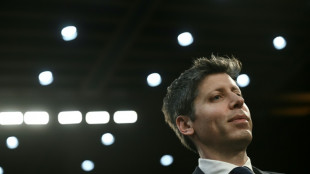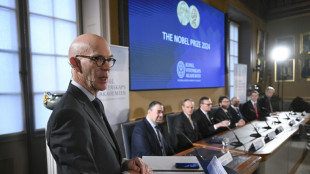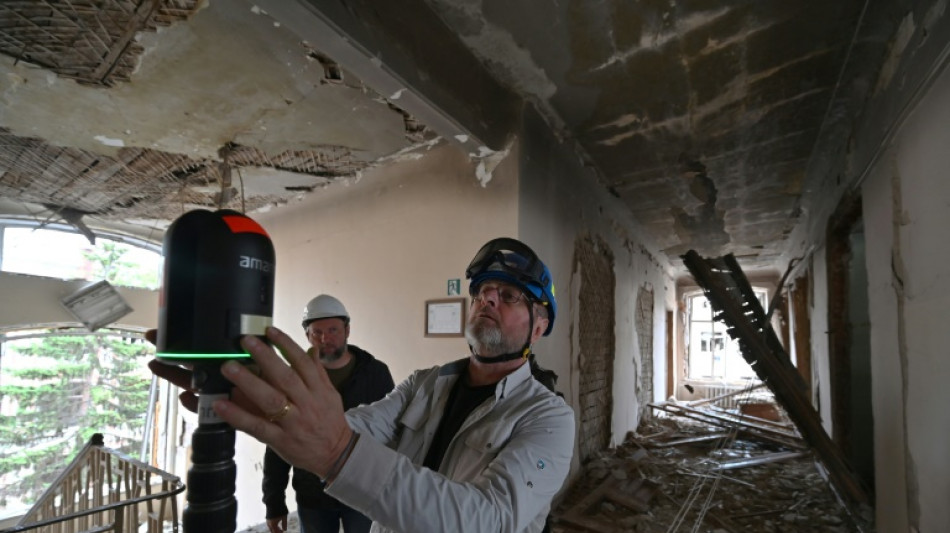
-
 Georgia ruling party wins local polls as mass protests flare
Georgia ruling party wins local polls as mass protests flare
-
Depoortere stakes France claim as Bordeaux-Begles stumble past Lyon

-
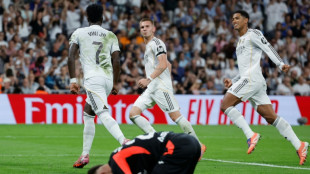 Vinicius double helps Real Madrid beat Villarreal
Vinicius double helps Real Madrid beat Villarreal
-
New museum examines family life of Mexican artist Frida Kahlo
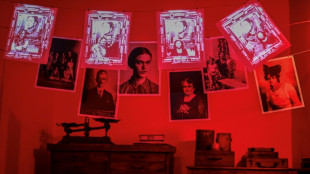
-
 Piccioli sets new Balenciaga beat, with support from Meghan Markle
Piccioli sets new Balenciaga beat, with support from Meghan Markle
-
Lammens must be ready for 'massive' Man Utd scrutiny, says Amorim
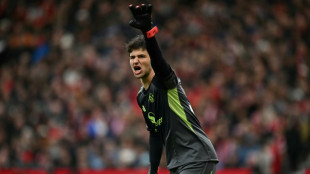
-
 Arteta 'not positive' after Odegaard sets unwanted injury record
Arteta 'not positive' after Odegaard sets unwanted injury record
-
Slot struggles to solve Liverpool problems after third successive loss

-
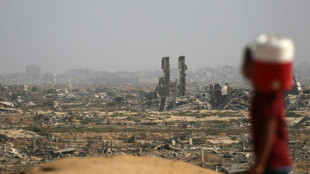 Netanyahu hopes to bring Gaza hostages home within days as negotiators head to Cairo
Netanyahu hopes to bring Gaza hostages home within days as negotiators head to Cairo
-
Ex-NFL QB Sanchez in hospital after reported stabbing

-
 Liverpool lose again at Chelsea, Arsenal go top of Premier League
Liverpool lose again at Chelsea, Arsenal go top of Premier League
-
Liverpool suffer third successive loss as Estevao strikes late for Chelsea

-
 Diaz dazzles early and Kane strikes again as Bayern beat Frankfurt
Diaz dazzles early and Kane strikes again as Bayern beat Frankfurt
-
De Zerbi living his best life as Marseille go top of Ligue 1

-
 US envoys head to Mideast as Trump warns Hamas against peace deal delay
US envoys head to Mideast as Trump warns Hamas against peace deal delay
-
In-form Inter sweep past Cremonese to join Serie A leaders

-
 Kolisi hopes Rugby Championship success makes South Africa 'walk tall' again
Kolisi hopes Rugby Championship success makes South Africa 'walk tall' again
-
Ex-All Black Nonu rolls back the years again as Toulon cruise past Pau

-
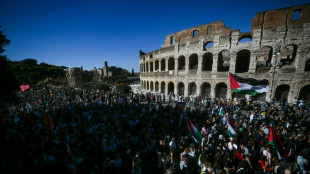 Hundreds of thousands turn out at pro-Palestinian marches in Europe
Hundreds of thousands turn out at pro-Palestinian marches in Europe
-
Vollering powers to European women's road race title

-
 Struggling McLaren hit bump in the road on Singapore streets
Struggling McLaren hit bump in the road on Singapore streets
-
'We were treated like animals', deported Gaza flotilla activists say

-
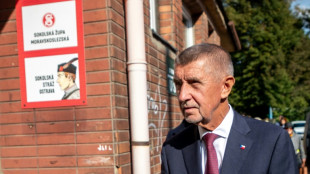 Czech billionaire ex-PM's party tops parliamentary vote
Czech billionaire ex-PM's party tops parliamentary vote
-
Trump enovys head to Egypt as Hamas agrees to free hostages
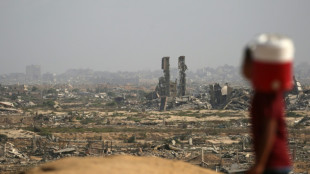
-
 Arsenal go top of Premier League as Man Utd ease pressure on Amorim
Arsenal go top of Premier League as Man Utd ease pressure on Amorim
-
Thousands attend banned Pride march in Hungarian city Pecs
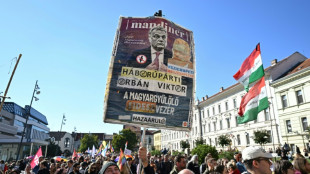
-
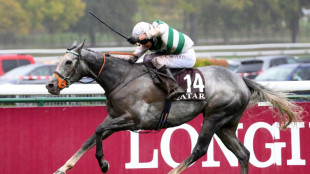 Consent gives Morris and Prescott another memorable Arc weekend
Consent gives Morris and Prescott another memorable Arc weekend
-
Georgian police fire tear gas as protesters try to enter presidential palace

-
 Vollering powers to European road race title
Vollering powers to European road race title
-
Reinach and Marx star as Springboks beat Argentina to retain Rugby Championship
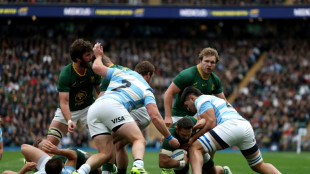
-
 Russell celebrates 'amazing' Singapore pole as McLarens struggle
Russell celebrates 'amazing' Singapore pole as McLarens struggle
-
Czech billionaire ex-PM's party leads in parliamentary vote
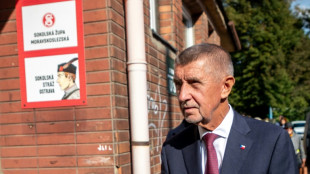
-
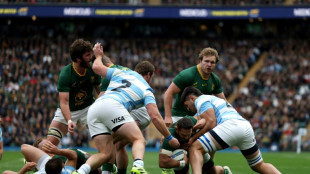 South Africa edge Argentina to retain Rugby Championship
South Africa edge Argentina to retain Rugby Championship
-
'Everyone's older brother': Slipper bows out in Wallabies loss

-
 Thousands rally in Georgia election-day protest
Thousands rally in Georgia election-day protest
-
Sinner starts Shanghai defence in style as Zverev defies toe trouble
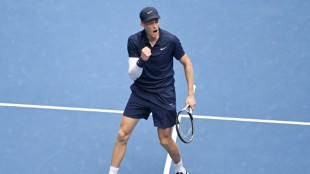
-
 Russell takes pole position for Singapore Grand Prix as McLaren struggle
Russell takes pole position for Singapore Grand Prix as McLaren struggle
-
Robertson praises All Blacks 'grit' in Australia win

-
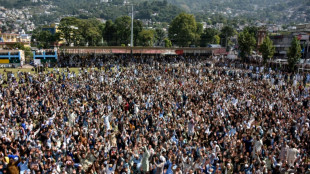 Government, protesters reach deal to end unrest in Pakistan's Kashmir
Government, protesters reach deal to end unrest in Pakistan's Kashmir
-
Kudus fires Spurs into second with win at Leeds

-
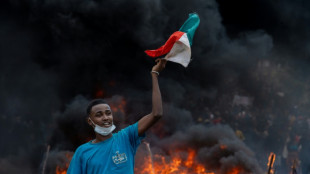 Rival rallies in Madagascar after deadly Gen Z protests
Rival rallies in Madagascar after deadly Gen Z protests
-
Egypt opens one of Valley of the Kings' largest tombs to public
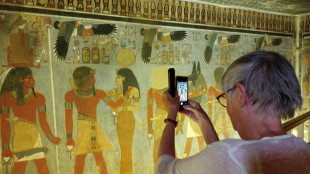
-
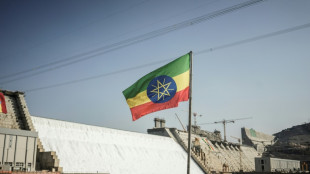 Ethiopia hits back at 'false' Egyptian claims over mega-dam
Ethiopia hits back at 'false' Egyptian claims over mega-dam
-
Sinner breezes past Altmaier to launch Shanghai title defence
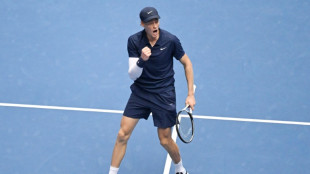
-
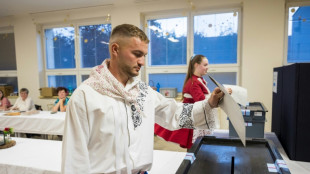 Czech ex-PM set to win vote, putting Ukraine aid in doubt
Czech ex-PM set to win vote, putting Ukraine aid in doubt
-
All Blacks down Wallabies to stay in Rugby Championship title hunt

-
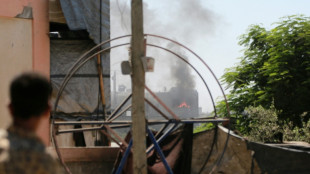 Gazans hail Trump ceasefire call as Hamas agrees to free hostages
Gazans hail Trump ceasefire call as Hamas agrees to free hostages
-
Zverev echoes Federer over tournaments 'favouring Sinner, Alcaraz'

-
 Yamal injury complicated, return date uncertain: Barca coach Flick
Yamal injury complicated, return date uncertain: Barca coach Flick
-
Conservative Takaichi set to be Japan's first woman PM


High-tech race to map Ukraine's damaged historic buildings
Many of Ukraine's historic monuments have been destroyed in the three months since Russia invaded, but cultural experts are working to conserve their memory using cutting-edge technology and 3D scans.
One of them is volunteer French engineer Emmanuel Durand, a specialist in 3D data acquisition, who is assisting a bevy of architects, engineers, historic building experts and a museum director to record buildings in Kyiv, Lviv, Chernigiv and Kharkiv.
Durand steps over a jumbled pile of beams and crunches over the rubble that was once Kharkiv's 19th-century fire station.
He plants his laser scanner, a sort of tripod with a pivoting head, in a strategic corner of the severely damaged building.
The redbrick fire station and its watchtower, built in 1887, are a monument to Kharkiv's industrial revolution.
Durand's gadget records the building from all angles.
"The scanner records 500,000 points per second. We'll get 10 million points from this location. Then we'll change location and go round the whole building, outside and inside. A billion points in all," he explains.
At the end of the day, Durand assembles all the data on a computer "like the pieces of a jigsaw" to digitally reconstruct the building.
The result is a perfect reproduction, accurate to within five millimetres (a fraction of an inch) that can be rotated in any direction or sliced into sections. You can even see the holes where blast waves from explosions have damaged the structure.
"This enables us to map out the building for the future. That could help us work out if anything has moved, which is important for safety purposes, and see what can be restored and what can't. It's also useful from a historical point of view," he says.
"We've got the actual missile-damaged building and an exact replica of how it used to look."
- 'Cultural genocide'-
In Kharkiv alone, around 500 buildings are listed as being of historic architectural significance. Most are in the dense historic city centre, on which Russian airstrikes are concentrated, according to architect Kateryna Kuplytska, a member of the body documenting damaged heritage sites.
She estimates that over a hundred of them have been hit already.
And while Russian troops have loosened their noose around Ukraine's second city, shells still rain down with regular monotony.
New explosions and blast waves, inclement weather, construction work and site visits will all contribute to hastening the destruction of these already weakened buildings, Kuplytska says.
"That's why it's essential to record them in accurate detail so we can plan urgent interventions that will stabilise the structures" and preserve their memory, she explains.
"Recording the destruction will also assist in criminal proceedings. We see serious damage to heritage across the whole country. It's genocide towards Ukrainian people and genocide towards Ukrainian culture," she says.
After two days at the fire station, Durand moves on to the economics faculty at the Karazin National University in Kharkiv. It is located right next to the imposing headquarters of the Ukrainian secret services, which is being targeted by the Russians and has been hit on numerous occasions.
The current iteration of the economics faculty was built in Soviet times. It was designed by Serhiy Tymoshenko, the father of the "modern Ukrainian" style of architecture of the early 20th-century, and is one of the country's first reinforced concrete structures.
Some critics suggest it is futile to document historic buildings in such meticulous detail while the war is still raging and people are dying every day.
But Tetyana Pylyptshuk, the director of the Kharkiv literary museum, begs to disagree.
"Culture is the basis of everything. If culture had developed well, people probably wouldn't be dying and there wouldn't be a war," she said.
Pylyptshuk, who also sits on the commission on damaged historical sites, has sent most of her museum collections to western Ukraine to protect them from damage -- and from looting, should Russian troops overrun Kharkiv.
"Today, everyone realises this. Maybe they were not so attentive to our cultural heritage before... but when you lose it, it hurts."
R.Adler--BTB



